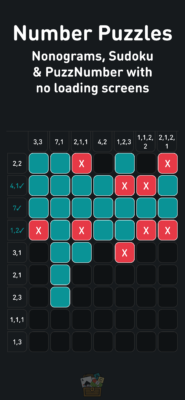Nonograms, also known as Picross or Griddlers, weave a tapestry of intrigue and logic, captivating puzzle enthusiasts worldwide. Their roots delve into a rich history, blending elements of artistry and mathematical deduction. The genesis of Nonograms traces back to Japan in the late 20th century. In the early 1980s, two Japanese puzzle enthusiasts, Non Ishida and Tetsuya Nishio, independently developed similar puzzle forms that laid the groundwork for what we now know as Nonograms. Non Ishida, a graphics editor for a Japanese magazine, created the first known Nonogram puzzle and introduced it to readers in 1987. Initially named “Window Art Puzzles,” these puzzles were a hit, captivating solvers with their blend of logic and artistic revelation.
Tetsuya Nishio, a Japanese puzzle designer, further refined Nonograms by establishing rules that allowed for unique, logically solvable puzzles. Nishio’s contributions solidified the logical foundations of Nonograms, ensuring there was only ever one possible solution to each puzzle.
Gameplay
Nonograms are visual puzzles that entail decoding a grid based on numerical clues provided for each row and column. The grid, typically blank initially, gradually unveils a picture or pattern when solved correctly. The objective is to determine which cells in the grid should be filled and which should be left empty based on the given number hints.
Here’s a concise guide on how to play Nonograms:
- Grid Understanding: Familiarize yourself with the grid, typically square, and its numerical hints provided for each row and column.
- Numerical Clues: These clues indicate the number of consecutive filled cells in a row or column and are vital for solving the puzzle.
- Logical Deduction: Use the clues to deduce which cells should be filled and which should be left empty. Apply logical reasoning to determine patterns and eliminate possibilities.
- Progression: Start with rows or columns that have the most significant number clues, as they provide more information for deductions.
- Elimination Technique: Employ a process of elimination to mark cells that can’t be filled based on conflicting clues.
- Patience and Precision: Nonograms demand patience and precision. Every move must be calculated to ensure a coherent and accurate final image.
- Trial and Error: If stuck, make educated guesses, but ensure you can backtrack if they lead to contradictions.
Play Nonograms for free

Nonograms stand as a testament to the fusion of art and logic, inviting enthusiasts to decipher pixelated mysteries and unveil hidden images through strategic thinking and deduction. From their humble origins in Japan to their global popularity in puzzle magazines, books, and digital platforms, Nonograms continue to mesmerize and engage a diverse audience.
So, whether you’re seeking a mental challenge or a creative outlet, immerse yourself in the world of Nonograms and uncover the pixelated masterpieces that await within these captivating puzzles. Nonograms is part of Higgster’s Games Compendium available for free, with no adverts or extra-charges.

